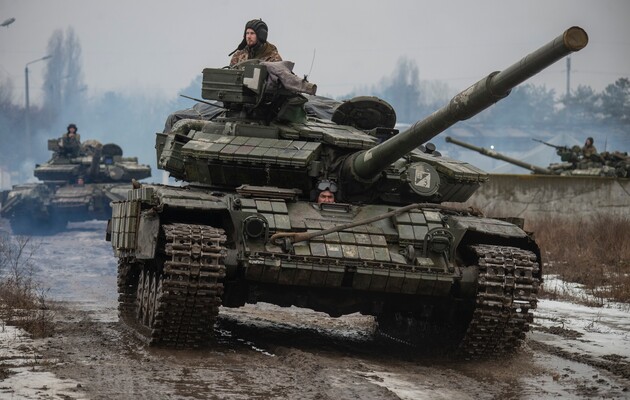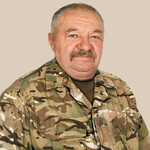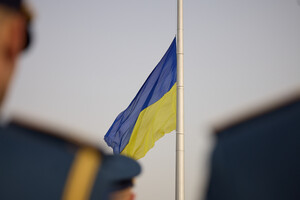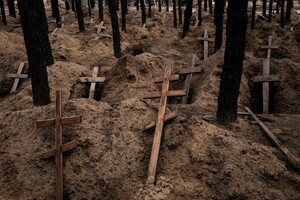11 Months of War: Struggle for Strategic Initiative Continues

The speed of the failure of Russian troops’ defense during our Kharkiv offensive has showed that the aggressor had lost not only the offensive, but also the defensive capability of its troops. The number of casualties and the drop in morale in the ranks of Russian soldiers have reached a critical level. To save the situation, Putin, under pressure from the military, had to announce the mobilization on September 21, calling it partial.
Of the 300,000 mobilized troops, 120,000 were sent to the front as replenishment without any training, and 180,000 with great effort were placed for training in training centers, and sometimes simply on ranges.
Meanwhile, the Ukrainian troops, having exhausted their reserves, had to stop at the reached lines to regroup and prepare for another offensive.
The front line stabilized.
Both sides required replenishment of reserves.
The struggle to overtake the enemy in its formation and preparation has begun. Winning this fight meant keeping/seizing the strategic initiative.
A period of more than three months from the beginning of the formation and training of the Russian reserves is sufficient for the training of those mobilized by military profession, as well as for the combat coordination of divisions and military units up to the level of brigades.
Today, there is a mass deployment of newly formed (reformed) military units of the aggressor in the combat zone, as well as their concentration on several operational directions.
And what about Ukrainian reserves?
Unlike the aggressor, the formation of our reserves largely depends on the military and technical assistance of our partners.
The article “Kherson is Ours. What’s Next?” shows two powerful factors that influenced the nature of the Kharkiv and Kherson offensive operations and made it difficult to carry them out, namely: the lack of air superiority, which severely limited the use of our air forces, as well as a significant deficit of the necessary armored weapons. Tanks and infantry fighting vehicles (BMP-2, American Bradley, German Marder) are needed to conduct military operations to break through the enemy’s prepared defenses.
The Commander-in-Chief of the Armed Forces of Ukraine, General Valerii Zaluzhnyi, briefly but thoroughly described the required volumes of this armament – 300 tanks, 700 BMPs, and 500 howitzers. Converting the quantitative indicators of equipment units into organizational staff units, this is about 10 tank battalions, 5–6 mechanized battalions, 17–18 artillery divisions. These are the main units for the formation of two mechanized brigades, two tank brigades, and three artillery brigades.
The figures are certainly estimates, since the options for the organizational and staffing structure of the units may be different, but they provide a general understanding of the needs.
Without delving into the details of the calculations, we note that, according to the results of Rammstein, Ukraine is provided with equipment in the amount sufficient to form two brigades (without tank battalions yet) thanks to armored vehicles from the USA; a mechanized brigade using equipment provided by Great Britain; and motorized infantry battalions with equipment from Sweden, Germany, and Poland.
We still lack Leopard-2 tanks. However, the announced start of training specialists for this equipment indicates that a positive decision regarding their delivery will inevitably be made in the near future.
On top of that we should consider more than a hundred PT-91 Twardy tanks offered by Poland, which are an upgrade of the T-72.
In general, the listed aid makes it possible to form 4–5 brigades, including 1–2 tank ones.
The readiness to use such military formations, which we need, is determined not only by obtaining the necessary weapons, but also by the terms for personnel training and combat coordination of units.
This process takes at least two months.
In particular:
— 1 week is for general training of a serviceman, acquisition of skills that every soldier should have, regardless of military specialty, namely moving on the battlefield, shooting individual weapons, digging in, providing first aid to oneself and others, mastering the basics of mine protection and other simple military knowledge;
— 4 weeks are for training in a military specialty;
— 1 week is for combat coordination as part of a detachment, platoon;
— 1 week is for combat coordination within the company;
— 1 week is for combat coordination within the battalion.
These are the minimum terms of training in wartime conditions. In peacetime, this cycle takes half a year.
Sometimes we hear that this “theory” does not work for us in wartime. In addition to 40 years of military service before transfer into the reserve, I have the experience of direct participation in the anti-terrorist operation in 2014-2016; I once again joined the defenders in the morning on February 24, 2022. Besides knowledge, as it should be, I, like the rest of the direct participants in the developments, have seen enough and I am aware of how it was done and is often still done. The strength of our commanders of all levels also is in the fact that the absolute majority of them, facing circumstances that do not allow them to act as prescribed by theory/orders/directives/statutes, do not give up, using insurmountable circumstances as an excuse, but look for ways to complete the task in the given conditions – and win.
Meanwhile, one should understand that the mentioned extreme situation is generated not only by the enemy, but by terrible professional incompetence of the relevant management bodies and officials who are entrusted with the timely adoption of any decision, as well as their inability to predict the development of events even in the near future. However, the latter also stems from incompetence, unless it is based on treason.
Miscalculations are corrected at the cost of heroic superpowers and unjustified losses on the battlefield. It is not for nothing that military wisdom says that the battle charter is written with soldiers’ blood, shed in previous battles.
The course of events indicates that the decisions made during the Rammstein-8 meeting were fundamentally agreed upon by the participants of the format long before their formal announcement.
Our partners have prepared in advance to sending equipment to Ukraine.
Back in July, it was reported about the start of training of the Ukrainian military at training centers in three regions of Great Britain as part of the INTERFLEX program. The training of 10,000 military personnel was expected, while the modules of training were announced only in a very general form; it was not specified in which military specialty the training would be conducted. In December, it was announced that training under the program was completed, and a new stage would begin in 2023, involving the preparation of 20,000 Ukrainian soldiers.
In October (the time coincides with the end of the Kharkiv offensive operation), the EU countries decided to launch the EUMAM Ukraine training mission, whereby it was planned to train 15,000 Ukrainian soldiers. 12,000 soldiers received basic training, and another 2,800 were to undergo specialized training.
The purpose of the EU mission is to provide individual, professional, and collective training to Ukraine’s Armed Forces.
Trainings are organized on the territory of various EU member states. Instead of a single training center in the EU countries, separate training courses for specialties are organized.
It is planned that most of the exercises will take place on the territory of Poland and Germany, while the vast majority of the 15,000 military personnel are trained in Poland.
Implementation of the program began in the last days of November.
As the then Minister of Defense Christine Lambrecht stated, the command of the German armed forces intended to receive five thousand soldiers for training within the framework of this European Union mission.
In October, the Minister of the Armed Forces of France, Sébastien Lecornu, stated that France would train up to two thousand Ukrainian soldiers on its territory as part of the EU training mission.
According to the General Staff of the Polish Armed Forses, in late November, within the framework of the European Union EUMAM Ukraine mission, Ukrainian military training began in Poland.
As Chairman of the Joint Chiefs of Staff of the USA General Mark Milley, announced, on January 15, expanded training began at the Grafenwoehr Training Area in Germany according to the training program that the Americans conduct for the Ukrainian military.
Meanwhile, all statements mentioned that the training would last several weeks (up to eight) and would include basic training of servicemen, training by profession (learning to use weapons that are transferred), as well as coordination of units, from the smallest combat units to the combat coordination of battalions (battalion tactical groups), to practice joint actions and coordination of units of different types.
As General Mark Milley stated, these comprehensive exercises should play an important role in preparing for further counteroffensive of the Armed Forces of Ukraine and the liberation of the territories from the Russian occupiers.
Speaking about the reserves formed and prepared by the command of the Armed Forces, it should be noted that, in addition to the formations created with the help of partners, reserves were definitely formed without their participation. We do not and cannot know their number, armament, provision, and degree of readiness. But I am sure that such reserves are present.
What’s to come?
The parties completed the formation of reserves almost simultaneously.
Both can plan and conduct offensive operations.
But there is another perspective for each of the parties. To conduct a defensive operation, letting the adversary seize the initiative, to exsanguinate the advancing enemy in battles, and only then to complete one’s defeat by conducting a counteroffensive operation and to take control of certain areas of the terrain. The main thing is to keep unused reserves for a counteroffensive during a defensive operation.
Time will tell which path the parties will choose.
With each week our strength will increase.
But for a decisive defeat of the enemy with minimal losses and in the shortest possible time, we need aviation.
And it’s not just about the F-16. A-10 attack aircraft, AN-64 Apach combat helicopters are needed.
I’m sure they will be sent to us. They are requested as soon as possible. We are waiting for the next Rammstein and hope that it will be aviation related.
We believe in the Armed Forces of Ukraine.
Glory to Ukraine!
Read this article in russian and Ukrainian.
Please select it with the mouse and press Ctrl+Enter or Submit a bug















 Login with Google
Login with Google